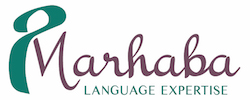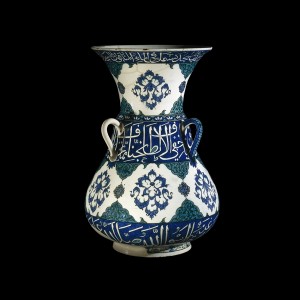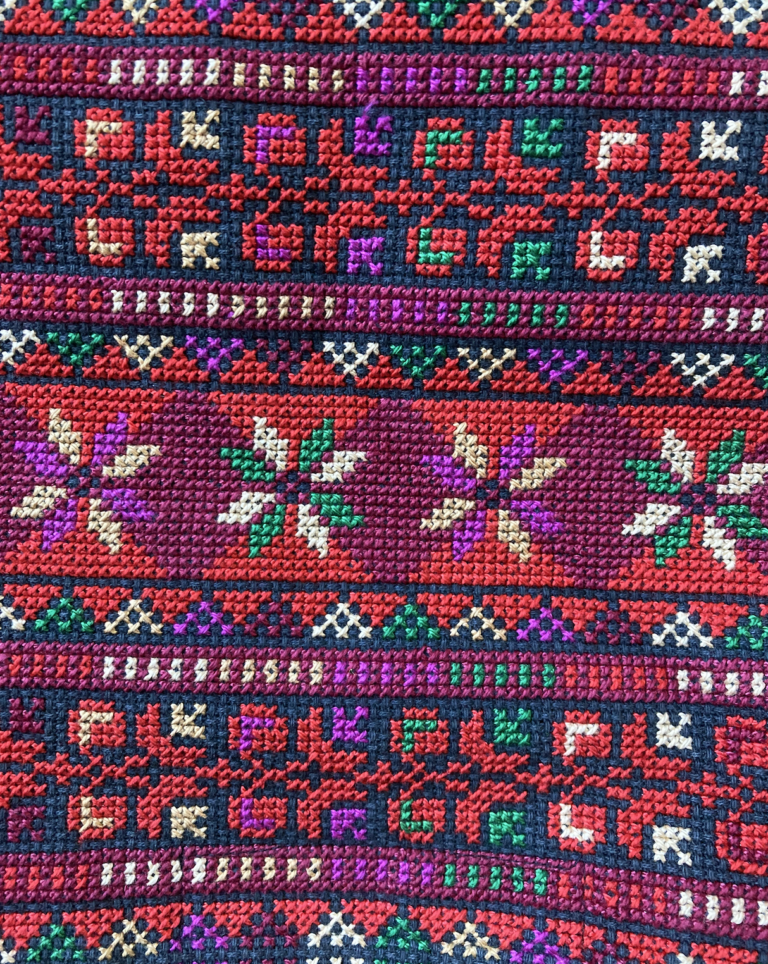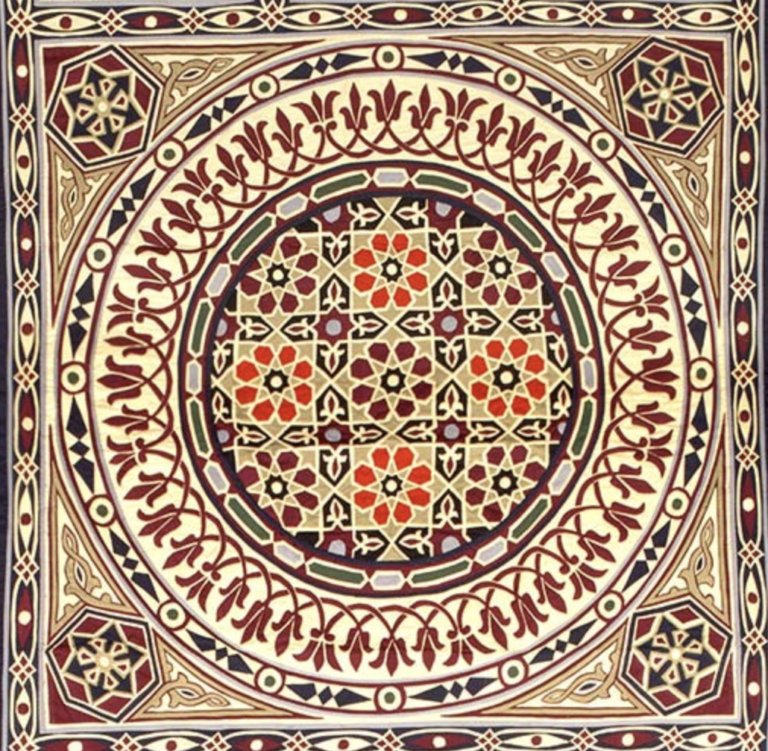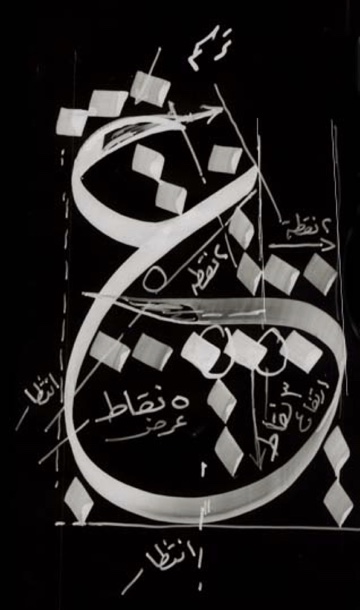Iznik Blossom in Jerusalem
Introduction
This is one of my favorite pieces of art. Those of us who are partial to the color combination blue and white may already know of Dutch Delftware or English willow pattern dishes. Both are seventeenth and eighteenth century European porcelain designs inspired by Chinese pinyin, literally ‘blue flowers’ wares, dating from the fourteenth century. Chinese porcelain also inspired pottery styles in the Islamic world, especially in Iznik (in the Ottoman Empire, today Turkey).
Description
The British Museum’s Islamic Art collection includes a large lamp. Gracefully shaped like a pear, with a flared neck, the shape derives from Mamluk glass lamps. Three handles, placed symmetrically at the lamp’s waist, allow suspension from chains (like this). The hard lead-frit body resembles porcelain. Its underglaze-painted surface is composed of two fields of white, alternating vertically with three blue fields. On the white fields, black and turquoise arabesque panels alternate with black and cobalt cloud scrolls. The cobalt blue fields contain inscriptions: bismallah and hadith (sayings) at neck and base, and a bolder-font Quranic reference at the waist. Above this central inscription runs a narrow band of small turquoise triangles alternating with three white tulip buds on a field of cobalt. From a distance, the lamp displays International Timurid motifs, those features that were considered stylish in Iraq, Iran, and surrounding regions, in the fifteenth century. In addition to these general Timurid motifs, around the base runs a unique inscription. It includes 1549 as the date of manufacture, ‘the poor and humble Musli’ as the artist’s name, and a dedication to Esrefzade, local saint of Iznik. Esrefzade may refer to the Qadiri mystic, ‘And Alla-i Rumi (died 1470 at Iznik, see Rogers 203).
Historical Background
Iznik (Byzantine Nicea) in Turkey, probably selected for its deposits of fine clay, served as a major source of production for the Ottoman court. Its ceramics were imitated in other Ottoman cities as well as Italy, Hungary, and Iran, and such production continues in cities such as Fes in Morocco (see Bloom 397). Iznik wares, initially decorated in blue and white, are known for demonstrating a renewed interest in the arabesque. The first known reference to Iznik blue-and-white appears “in the kitchen accounts of Mehmed II at Bursa from 1469 to 1473” (see Rogers 186). Their typical decorations include chinoiserie, peony, lotus, cloud scrolls, arabesques, knotted interlaces, and pseudo-Kufic script calligraphy. These last several lead some people to conclude that the potters were trained in a Mamluk tradition. Prior to this Mamluk influence, Chinese blue-and-white porcelain was imported into the Middle East as early as the late fourteenth century, appearing in bulk with the brief opening of early Ming China to foreign trade in the early fifteenth century. The hardness, durability, and size of this porcelain stimulated a high demand for it in the Islamic world of the fifteenth century. Aside from exterior influences, however, Iznik blue-and-white signified a kind of technological revolution, permitting a relatively low temperature for firing and achieving impressive effects with an often limited palette.
The Story of this Lamp
This mosque lamp is the earliest extant example of ‘Damascus’ wares. ‘Damascus’ wares, so called since they were thought to be made in Damascus, are considered the finest of all Iznik pottery for their brilliant glazes and varied designs. Suleyman (reigned 1520-1566) may have commissioned it in his restoration (1530s-1540s) of the Haram al-Sharif, at least it was very likely commissioned by the court. At that time, Ottomans controlled all three holy places of Islam (Mecca, Medina, and Jerusalem). The mosque lamp adds to an image of the Haram al-Sharif as a powerful, monumental, central statement of Islam in this period. It also demonstrates the Ottoman’s interest in renewing the stature of the monument, not coincidentally the nearest of the three sites to the Ottoman capital and center of power.
What kind of message does a lamp convey? The Arabic language, first language of Islam, reveals some answers. Grandeur, though impressive, does not summarize the meaning of this important decoration. It is also clearly more than simply a light. What is a ‘mosque lamp’? The Arabic word for mosque, masjid, means ‘place where one worships God.’ Lamps provide light, nur in Arabic, a concept of beauty, knowledge, and goodness in the Quran. So the mosque lamp is like an illuminated blossom, virtually flowering by illuminating a prominent place of prayer. The statement of the mosque that once shone forth from a central shrine of Islam in Jerusalem now sits in London as an elegant and eloquent reminder of the medieval Islamic world.
Sources
Blair, Sheila S. and Jonathan M. Bloom The Art and Architecture of Islam 1250-1800. 1995.
Bloom, Jonathan and Sheila Blair. Islamic Arts. 1997.
Rogers, J.M. and R.M. Ward. Süleyman the Magnificent. 1988.
